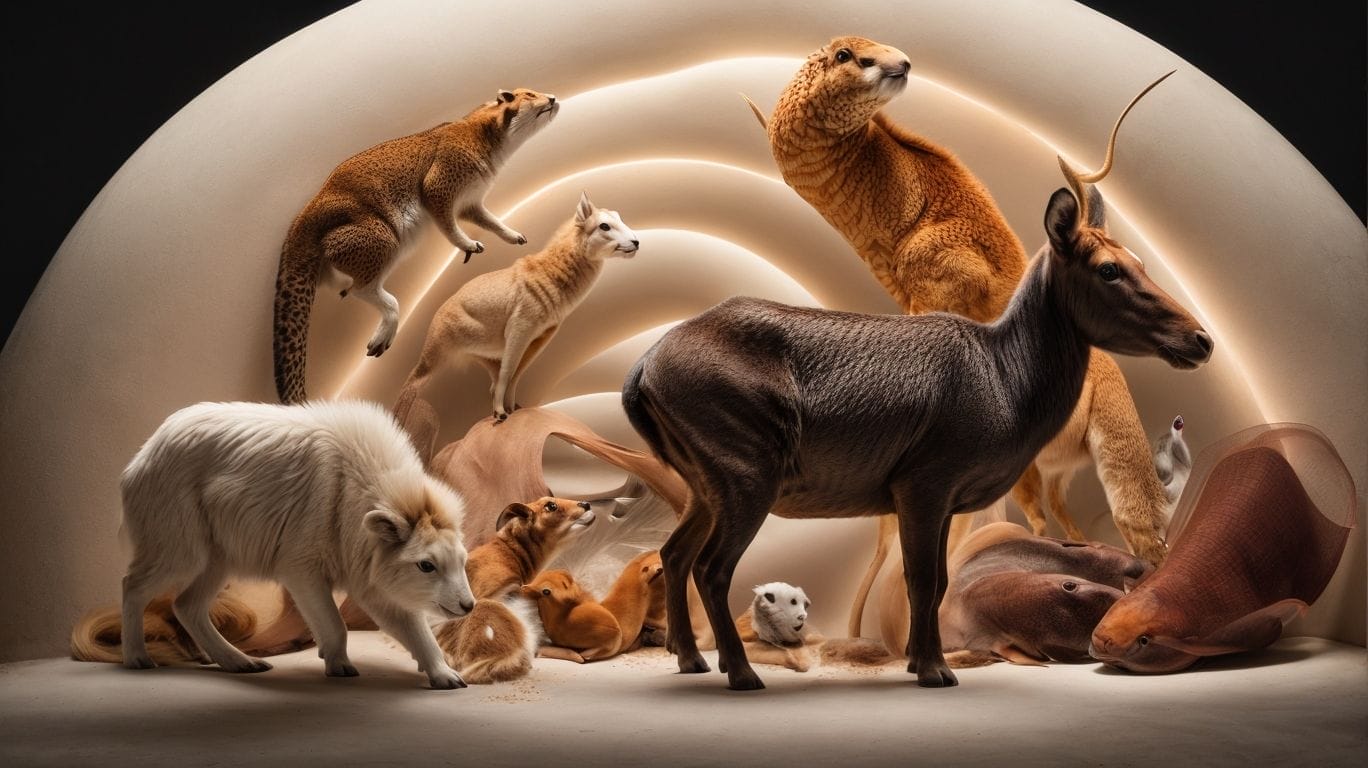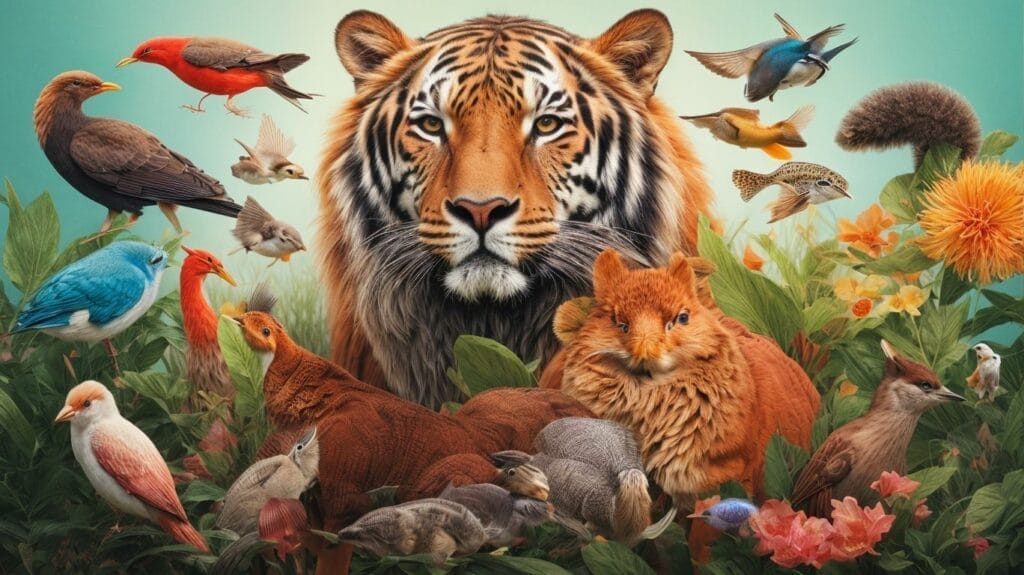The concept of menstruation, the shedding of the uterine lining, is primarily associated with human females. However, in the animal kingdom, reproductive cycles differ significantly among species. To understand whether animals have periods, it is crucial to distinguish between menstruation and the estrous cycle.
Menstruation refers to the monthly shedding of the uterine lining in preparation for pregnancy if fertilization does not occur. On the other hand, the estrous cycle, commonly observed in other mammals, involves a series of physiological changes related to reproduction.
While menstrual cycles are absent in most animals, there are some exceptions. Certain species, such as primates like humans, bonobos, and some bats, do experience menstruation-like processes. These animals exhibit a bloody discharge that corresponds to the shedding of the uterine lining.
The presence of menstruation-like behavior in animals provides valuable insights into reproductive strategies across species. Understanding these differences helps us appreciate the adaptations and mechanisms involved in successful reproduction for different animal species. From the role of hormones to the influence of the estrous cycle, animal reproduction encompasses fascinating variations that contribute to the diversity and survival of different species. By exploring the importance of reproductive cycles and the factors influencing them, we can gain a deeper understanding of the natural world.
Key takeaways:
- Animals do not have periods like humans: Periods, characterized by the shedding of the uterine lining, are specific to humans and a few closely related primates. Most animals, including mammals, have reproductive cycles called estrous cycles instead.
- Estrous cycles in animals: Estrous cycles involve the reabsorption or reabsorption of the uterine lining, making it different from human menstruation. The length, timing, and characteristics of estrous cycles vary among different animal species.
- Examples of animals with reproductive cycles: Some animals that experience estrous cycles include dogs, cats, cows, horses, and rabbits. These animals undergo hormonal changes and exhibit mating behaviors during specific periods of fertility.
Understanding Menstruation vs Estrous Cycle

Photo Credits: Petnarnia.Com by Paul Lewis
Understanding the difference between menstruation and the estrous cycle is essential to comprehending reproductive cycles in animals. Menstruation, which occurs in humans and a few other species, such as primates and bats, involves the shedding of the uterine lining. On the other hand, animals with an estrous cycle reabsorb or reabsorb and recycle their uterine lining. This crucial distinction significantly impacts reproductive strategies. Animals with an estrous cycle are typically only receptive to mating during specific periods, while those with menstruation can conceive at any time. Gaining an understanding of these variations in reproductive cycles provides valuable insight into the biology and behavior of different animal species.
What is Menstruation?
What is Menstruation?
Menstruation is the process of shedding the uterine lining in female mammals, including humans and some primates. It is a natural occurrence that takes place when the uterus thickens its lining in preparation for pregnancy. If fertilization does not occur, the uterine lining is shed through the vagina. Hormones, such as estrogen and progesterone, regulate this process. On average, menstruation lasts for a few days and is often accompanied by symptoms like cramps and bloating. Understanding the concept of menstruation is crucial for women’s health and reproductive well-being. It enables individuals to monitor their menstrual cycles, identify any irregularities, and make informed decisions regarding contraception or pregnancy.
What is the Estrous Cycle?
What is the Estrous Cycle?
The estrous cycle, also known as the reproductive cycle, occurs in mammals and is characterized by recurring hormonal changes that regulate fertility and the release of eggs for reproduction. Unlike humans, animals do not have a menstrual cycle but instead experience estrus or heat, during which they are sexually receptive and capable of conception. It is important to note that the length and duration of the estrous cycle vary among different species. However, regardless of the specific variations, the estrous cycle plays a crucial role in animal reproduction and is vital for the survival and continuation of their species. Thus, understanding the estrous cycle is essential for breeding and effectively managing animal populations.
Do Animals Have Periods?

Photo Credits: Petnarnia.Com by Jose Anderson
I bet you’ve wondered: do animals have periods? Well, let’s dive into this fascinating topic and explore the truth behind it. We’ll uncover the evidence of menstruation in animals and even discover some surprising examples of animals that actually menstruate. Get ready to be amazed by the incredible reproductive experiences that exist in the animal kingdom!
Evidence of Menstruation in Animals
Evidence of Menstruation in Animals
In the animal kingdom, instances of menstruation can be observed in certain species, albeit to a lesser extent than in humans. Menstrual cycles are encountered in select mammals, including primates, bats, and shrews. However, it is important to note that these occurrences are not as prevalent as in humans. Unlike the shedding of the endometrium that transpires during menstruation in humans, these animals reabsorb the endometrium back into their bodies. It is worth mentioning that slight traces of blood may be present in their discharge. Such evidence strongly implies that these animals might possess reproductive processes akin to those of humans. Nevertheless, further investigation is imperative to comprehensively grasp the scope and underlying purpose of menstruation in non-human species.
Examples of Animals that Menstruate
Examples of Animals that Menstruate
- Humans: Menstruation is a cyclic shedding of the uterine lining.
- Great apes: Chimps and bonobos also experience menstrual cycles.
- Bats: Some species, like the common vampire bat, have a menstrual cycle.
- Elephants: These majestic creatures go through a menstrual cycle lasting several weeks.
- Shrews and rodents: Many small mammals, like shrews and rats, have monthly cycles similar to humans.
Pro-tip: Understanding the menstrual cycles of different animals can provide insights into reproductive strategies and evolutionary adaptations.
How Does Animal Reproduction Differ from Humans?

Photo Credits: Petnarnia.Com by Philip Thomas
Animal reproduction is a fascinating subject that often sparks curiosity. In exploring how animal reproduction differs from humans, we uncover intriguing details about their unique reproductive processes. Delving into the role of hormones in animal reproduction and the significance of the estrous cycle, we’ll discover captivating insights into the diverse ways animals navigate the intricacies of procreation. Get ready to embark on an enlightening journey through the remarkable world of animal reproductive mechanisms.
Role of Hormones in Animal Reproduction
Hormones play a critical role in animal reproduction by regulating various aspects such as mating behavior, ovulation, and pregnancy. For instance, in female animals, estrogen and progesterone control the estrous cycle, a determining factor for fertility and receptiveness to mating. Male animals, on the other hand, rely on testosterone to influence sperm production and sexual behavior. Specialized glands like the ovaries and testes produce these essential hormones. Understanding the pivotal role of hormones in animal reproduction assists scientists in developing interventions for both domestic and wild animals’ breeding programs and reproductive health management.
It is worth noting that certain hormones can even have an impact on social behaviors and hierarchies within groups of some animal species.
The Significance of the Estrous Cycle in Animals
The significance of the estrous cycle in animals is crucial in the reproductive process. It plays a significant role in facilitating successful reproduction and ensuring the continuation of species. During the estrous cycle, female animals experience hormonal changes that control their fertility and receptivity to mating. This cycle includes distinct phases such as proestrus, estrus, metestrus, and diestrus, each serving a specific purpose in the reproductive process. The estrous cycle enables animals to synchronize their reproductive behaviors, allowing for optimal timing of mating and the potential for successful fertilization. This cycle is essential for maintaining population dynamics and genetic diversity within animal species.
The Importance of Reproductive Cycles in Animal Species

Photo Credits: Petnarnia.Com by Eric Rivera
Reproductive cycles in animals play a vital role in ensuring the survival and continuation of their species. In this section, we’ll uncover the importance of these cycles and how animals adapt for successful reproduction. From understanding the factors that influence their reproductive cycles to unveiling fascinating adaptations, this exploration will shed light on the intriguing world of animal reproduction. So, get ready to dive into the captivating realm of nature’s reproductive strategies and the wonders they hold.
Adaptations for Successful Reproduction
Animals have evolved a variety of adaptations for successful reproduction, which ultimately contribute to the survival of their species. These adaptations manifest in different forms, including courtship rituals, reproductive timing, reproductive strategies, and physical adaptations.
Firstly, courtship rituals serve as a crucial mechanism for attracting mates. Countless animals engage in elaborate behaviors to captivate potential partners. These rituals can consist of displays of strength, vibrant coloration, or intricate mating calls.
Secondly, animals often possess specific breeding seasons or times when they are most fertile. This ensures that offspring are born during favorable conditions, optimizing their chances of survival.
Thirdly, reproductive strategies differ among species. Certain animals give birth to large litters to enhance the probability of offspring survival. On the other hand, some species invest significant time and resources into raising a limited number of offspring.
Lastly, animals have developed physical adaptations to facilitate reproduction. These adaptations include specialized reproductive organs, such as the intricate genitalia seen in certain insects. Additionally, some structures assist in mating or birthing, such as the unique marsupial pouch.
Throughout history, these adaptations have been molded by evolution to maximize the likelihood of successful reproduction and the continuation of species.
Factors Influencing Reproductive Cycles in Animals
Various factors, including environmental cues, hormones, and social interactions, influence the reproductive cycles of animals. These factors, known as Factors Influencing Reproductive Cycles in Animals, play a crucial role in triggering mating and breeding seasons in many species. Environmental factors, such as temperature and photoperiod, are key aspects that impact the timing and frequency of reproductive behaviors. Additionally, hormones, such as estrogen and progesterone, regulate the reproductive cycles and facilitate the release of eggs in females. Social interactions, such as dominance hierarchies and availability of mates, also have a significant influence on the timing and frequency of reproductive behaviors.
Understanding these Factors Influencing Reproductive Cycles in Animals is essential for managing breeding programs, conserving endangered species, and studying reproductive biology. Researchers should consider these factors when conducting studies on animals to interpret their reproductive behaviors and cycles accurately. Moreover, some suggestions for further research on Factors Influencing Reproductive Cycles in Animals could include investigating the effects of changing environmental conditions on breeding patterns, studying the role of pheromones in regulating reproductive behaviors, and examining the impact of social dynamics on reproductive success. By gaining a deeper understanding of these Factors Influencing Reproductive Cycles in Animals, scientists can contribute to the conservation and management of animal populations, as well as improve our knowledge of reproductive biology.
Some Facts About “Do Animals Have Periods?”:
- ✅ Menstruation is a normal part of the reproductive cycle in humans but is rare in the animal kingdom. (Source: Our Team)
- ✅ Primates, some bats, and elephant shrews are among the few animal species that experience menstruation. (Source: Our Team)
- ✅ Menstruation has been surrounded by myths and taboos throughout history, leading to stigmatization and a lack of understanding. (Source: Our Team)
- ✅ Dogs and cats do not have periods, but they experience various reproductive cycles and behaviors related to mating. (Source: IFL Science)
- ✅ Menstruation is a complex process controlled by hormones and involves the shedding of the uterine lining if no embryo is implanted. (Source: Our Team)


